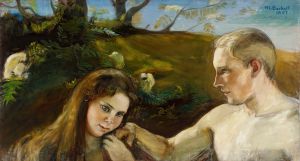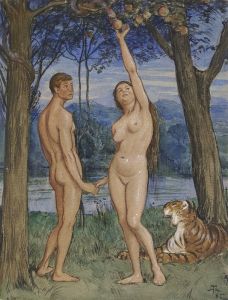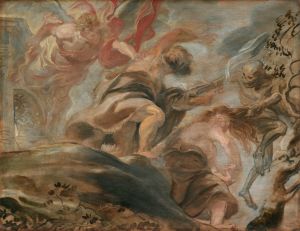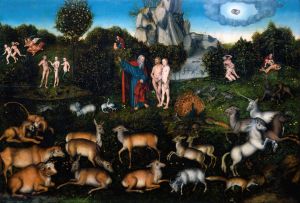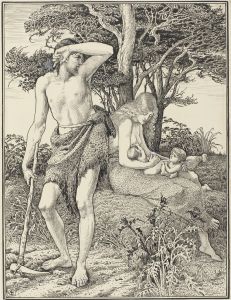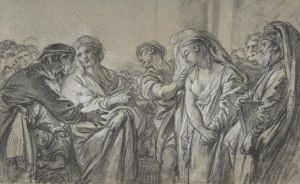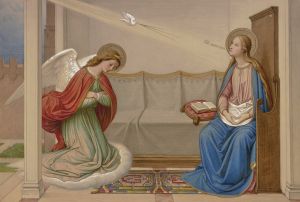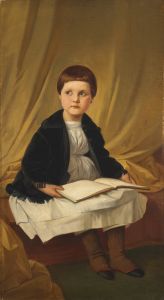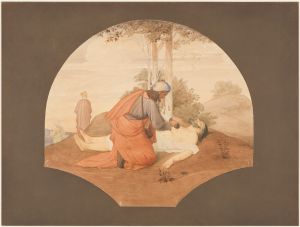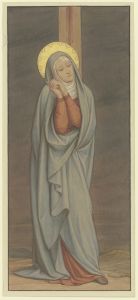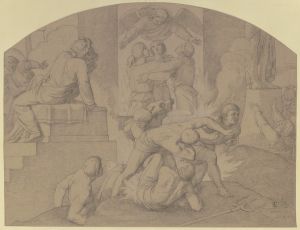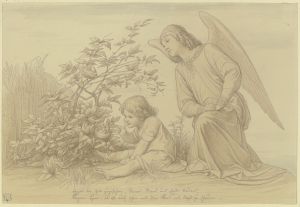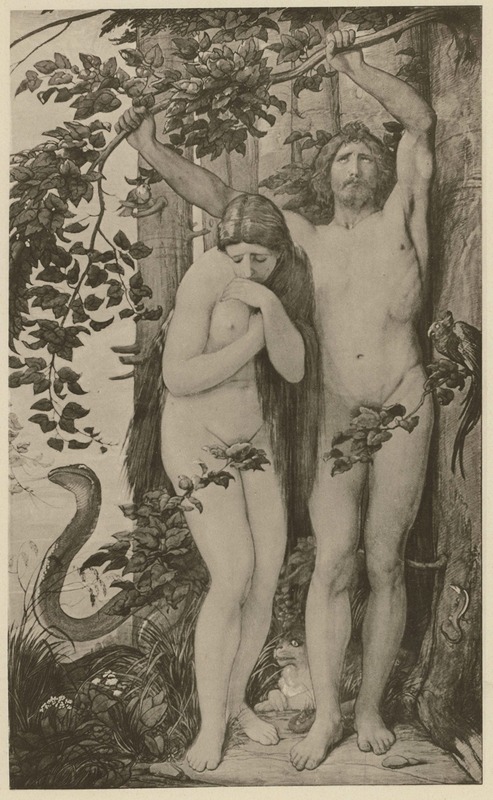
Adam und Eva
A hand-painted replica of Eduard von Steinle’s masterpiece Adam und Eva, meticulously crafted by professional artists to capture the true essence of the original. Each piece is created with museum-quality canvas and rare mineral pigments, carefully painted by experienced artists with delicate brushstrokes and rich, layered colors to perfectly recreate the texture of the original artwork. Unlike machine-printed reproductions, this hand-painted version brings the painting to life, infused with the artist’s emotions and skill in every stroke. Whether for personal collection or home decoration, it instantly elevates the artistic atmosphere of any space.
Eduard von Steinle was a prominent 19th-century German painter, known for his contributions to the Nazarene movement, which sought to revive honesty and spirituality in Christian art. One of his notable works is "Adam und Eva," a painting that reflects his deep engagement with religious themes and his commitment to the ideals of the Nazarene movement.
"Adam und Eva" by Eduard von Steinle is a depiction of the biblical figures Adam and Eve, the first humans according to Judeo-Christian tradition. Steinle's work is characterized by its attention to detail and its adherence to the stylistic and thematic principles of the Nazarene movement, which emphasized a return to the purity and simplicity of early Christian and medieval art. The Nazarenes were known for their rejection of the Neoclassical style that dominated the art world at the time, favoring instead a more spiritual and emotionally resonant approach.
In "Adam und Eva," Steinle captures the moment of innocence before the Fall of Man, a common subject in Christian art. The painting likely portrays Adam and Eve in the Garden of Eden, surrounded by the lush and harmonious natural world that, according to the Bible, God created for them. Steinle's use of color and composition would have been intended to evoke a sense of peace and divine order, reflecting the unspoiled beauty of creation before sin entered the world.
Steinle's work often included detailed and expressive figures, and in "Adam und Eva," he would have aimed to convey the purity and grace of the first humans. The figures of Adam and Eve are typically depicted with idealized features, embodying the perfection attributed to them in their original state. The artist's attention to anatomical accuracy and his skillful rendering of human form are evident in the way he portrays the figures, which is consistent with the Nazarene emphasis on fidelity to nature and historical authenticity.
The painting also likely includes symbolic elements that allude to the broader narrative of the Fall. Common symbols in depictions of Adam and Eve include the Tree of Knowledge, the serpent, and various animals that populate the Garden of Eden. These elements serve to remind viewers of the impending tragedy and the loss of innocence that follows the disobedience of Adam and Eve.
Eduard von Steinle's "Adam und Eva" is a testament to his skill as an artist and his dedication to the spiritual and moral dimensions of art. His work continues to be appreciated for its beauty and its ability to convey complex theological themes in a visually compelling manner. While specific details about this particular painting's provenance, current location, or critical reception might not be extensively documented, Steinle's broader body of work remains influential in the study of 19th-century religious art.





